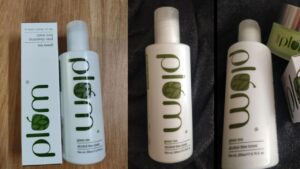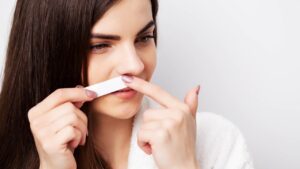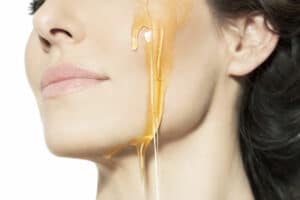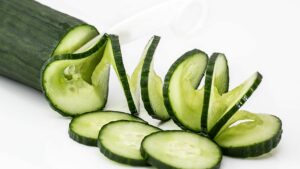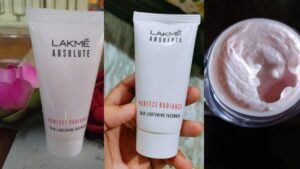Fungal acne, also known as pityrosporum folliculitis, is a common skin condition caused by an overgrowth of yeast on the skin. It presents as small, itchy bumps that resemble acne but are actually a different type of infection. Treating fungal acne requires careful consideration of skincare products, including moisturizers. In this article, we will explore the characteristics of fungal acne-safe moisturizers and provide you with a comprehensive guide to maintaining healthy skin while managing this condition.
Understanding Fungal Acne:
Before delving into suitable moisturizers, it’s essential to understand fungal acne and its causes. Fungal acne is caused by an overgrowth of yeast called Malassezia that is naturally present on our skin. Certain factors, such as heat, humidity, and excessive sebum production, can contribute to the proliferation of this yeast, leading to fungal acne breakouts. Read also How to Get Rid of Red Acne Scars and Pimples?
Choosing Fungal Acne-Safe Moisturizers:
When it comes to selecting moisturizers for fungal acne-prone skin, it’s crucial to avoid products that contain ingredients that feed or trigger the growth of Malassezia yeast. Here are some key points to consider:
Read also: Home Made Night Cream for Pimples and Glowing Skin
- Look for non-comedogenic formulations: Fungal acne-safe moisturizers should be lightweight, non-greasy, and non-comedogenic. This means they won’t clog your pores or contribute to the growth of yeast.
- Avoid known triggers: Moisturizers that contain ingredients like oils (e.g., coconut oil, olive oil) or fatty acids (e.g., lauric acid, stearic acid) should be avoided as they can exacerbate fungal acne.
- Seek antifungal ingredients: Opt for moisturizers that contain antifungal agents such as sulfur, tea tree oil, zinc pyrithione, or ketoconazole. These ingredients can help combat the yeast overgrowth and reduce inflammation.
- Mild and soothing formulations: Fungal acne-prone skin often requires gentle care. Choose moisturizers that are fragrance-free, hypoallergenic, and free from potential irritants such as alcohol, synthetic fragrances, and dyes.
- Hydration is key: Although fungal acne is often associated with excessive sebum production, it’s essential to keep the skin hydrated. Look for moisturizers that provide adequate hydration without causing excessive oiliness.
Recommended Fungal Acne-Safe Moisturizers:
Here are some of the best fungal acne-safe moisturizers available in the market:
CeraVe PM Facial Moisturizing Lotion:
This moisturizer is a favorite among many individuals with fungal acne-prone skin. It contains ceramides, hyaluronic acid, and niacinamide, which help hydrate the skin and restore its protective barrier.
Sebamed Clear Face Care Gel:
Specifically formulated for oily and acne-prone skin, this gel moisturizer is oil-free and lightweight. It contains panthenol and hyaluronic acid to provide hydration without clogging pores or triggering fungal acne.
La Roche-Posay Toleriane Double Repair Face Moisturizer:
Developed with sensitive skin in mind, this moisturizer is oil-free and non-comedogenic. It contains ingredients like niacinamide and ceramides to restore the skin’s moisture barrier while being gentle on fungal acne-prone skin.
Benton Aloe Propolis Soothing Gel:
This gel-based moisturizer is a great option for those with sensitive and fungal acne-prone skin. It contains aloe vera and propolis extract, which have soothing and antimicrobial properties to calm irritated skin and help prevent further breakouts.
Etude House SoonJung 2x Barrier Intensive Cream:
This cream is formulated with gentle ingredients suitable for sensitive and acne-prone skin. It contains panthenol and madecassoside to strengthen the skin barrier, provide hydration, and reduce inflammation associated with fungal acne.
Krave Beauty Oat So Simple Water Cream:
This lightweight moisturizer is formulated with minimal ingredients, making it suitable for sensitive and fungal acne-prone skin. It contains oats and ceramides to hydrate and soothe the skin without clogging pores.
Purito Centella Green Level Recovery Cream:
With centella asiatica extract as the star ingredient, this cream helps soothe and repair the skin. It is lightweight, non-greasy, and suitable for those with fungal acne-prone skin.
Remember, individual reactions to skincare products may vary, so it’s always a good idea to patch test new products and consult with a dermatologist if you have any concerns. These moisturizers have received positive reviews from individuals with fungal acne, but it’s important to find the one that works best for your specific skin type and needs.
Conclusion:
Choosing the right moisturizer is an essential step in managing fungal acne. Opting for fungal acne-safe moisturizers that are non-comedogenic, free from known triggers, contain antifungal ingredients, and provide gentle hydration can help promote a healthy skin barrier while reducing the risk of yeast overgrowth. Remember, everyone’s skin is unique, so it’s important to patch test new products and consult with a dermatologist if you have persistent skin concerns. With the right skincare routine and suitable moisturizers, you can effectively manage fungal acne and achieve clear, healthy skin.



